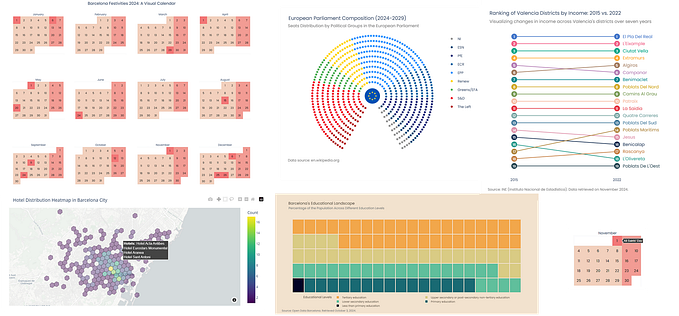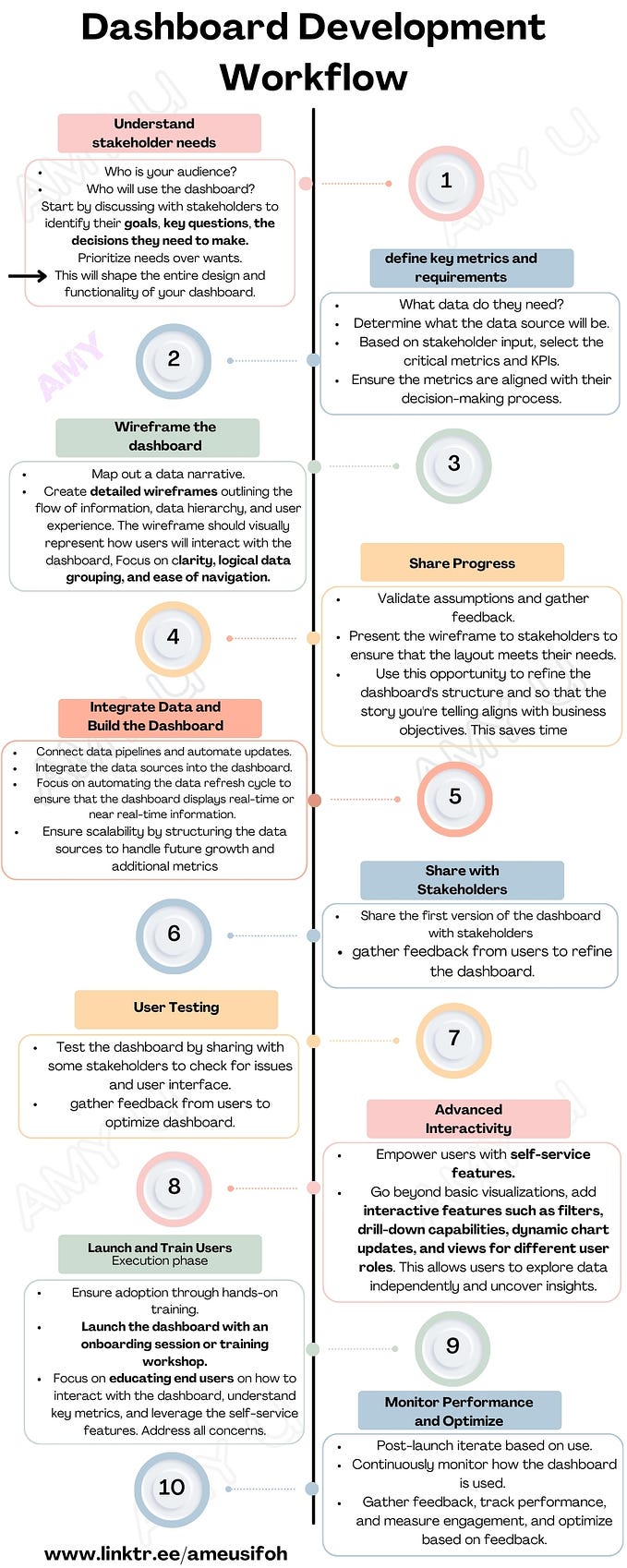
Introducing the Spatial Equity Data Tool Version 2
About one year ago, we launched the Spatial Equity Data Tool to respond to demand from city officials and local practitioners for tools that would enable them to more easily incorporate equity into decisionmaking. At a high level, the tool allows users to upload their own point-level data (e.g., the locations of 311 requests or playgrounds) and compare their data against a set of precompiled baselines from the American Community Survey five-year estimates to compute and visualize geographic and demographic disparity scores.
People have used the tool in creative and impactful ways since its launch. The Bloomington Pedestrian and Bike Safety Commission used the tool to analyze equity in sidewalk funding allocations. Others have used the tool to study the distribution of 911 requests for service in Denver, new construction building permits in Chicago, economic and racial inequities in car crashes in Cincinnati, and broken McDonalds ice cream machines in Houston.
Shortly after the tool launched, the Biden administration took office and enacted the Executive Order on Advancing Racial Equity, which included a study of equity assessment methods and a requirement to conduct equity assessments in federal agencies. The executive order has accelerated the focus on equity analysis at all levels of government and increased interest in using the Spatial Equity Data Tool (PDF) as a piece of this analysis.
There was one problem — the version 1 tool only worked at the city level, which limited its utility for interested users from county, state, and federal agencies. Today, we’re so excited to share the new, expanded version of the Spatial Equity Data Tool. If you’re not familiar with the original tool, we recommend you read our introductory post before continuing. The version 2 tool adds the following major enhancements:
· New geographic levels of analysis: The version 2 tool introduces three new geographic levels of analysis: county-, state-, and national-level analysis. These new levels dramatically expand the potential applications to users with data and analysis questions focused on different geographic areas: from federal agency officials to state government agencies to county-level nonprofits. Although we recognize this change does not meet all use cases, such as regional or metropolitan-area analysis, we selected these additional geographies based on the most frequently received user requests.
· Additional baseline datasets: The version 2 tool also introduces new baseline datasets allowing users to select the baseline for comparison that most closely represents an equitable distribution of their data. Although version 1 only enabled users to change the baseline dataset for the geographic disparity analysis, version 2 allows users to change the baseline for the demographic disparity analysis as well. This feature is critical for racial equity analysis, as historical and persistent structural racism has meant people of color are overrepresented in the population with low incomes. In the 2015–19 American Community Survey, people of color represent 39 percent of the total population but 56 percent of people below the federal poverty level. Users analyzing racial equity in programs meant to reach the population with low incomes can now better account for these structural disparities in their analysis.
To illustrate the tool’s new utility, we’ll walk through an analysis using one of the new sample datasets: electric vehicle (EV) charging stations from the US Department of Energy. The recently-passed bipartisan infrastructure bill includes $7.5 billion for electric vehicle charging infrastructure with a mandate to prioritize areas underserved by existing charging infrastructure. The money will primarily be allocated through grants to states. Department of Energy and Department of Transportation officials working to equitably implement the EV infrastructure program could use the Spatial Equity Data Tool to answer several key questions:
· Which communities and demographic groups are currently underserved by EV charging stations?
· How do these patterns vary across states?
· Which states are over- and underrepresented in the distribution of EV charging stations?
To start, users will be asked to identify the geographic level of the data they wish to analyze. With the EV charging stations dataset covering the entire United States, we will select national-level data.

Demographic disparities
After running the analysis, the first part of the dashboard shows the demographic disparity scores, or which groups are over- and underrepresented in the data. The tool calculates these scores (PDF) by comparing the demographics in the chosen baseline with the demographics across the neighborhoods containing the data points. Overrepresented groups tend to have more access to the data points in question than we’d expect, and underrepresented groups have less access. For national-level analysis, the tool shows both the overall demographic disparity scores for the US (filled dot) and the scores for each state (outlined dot) to facilitate state comparisons. The state-level tool shows the scores for the chosen state and each county within the state.
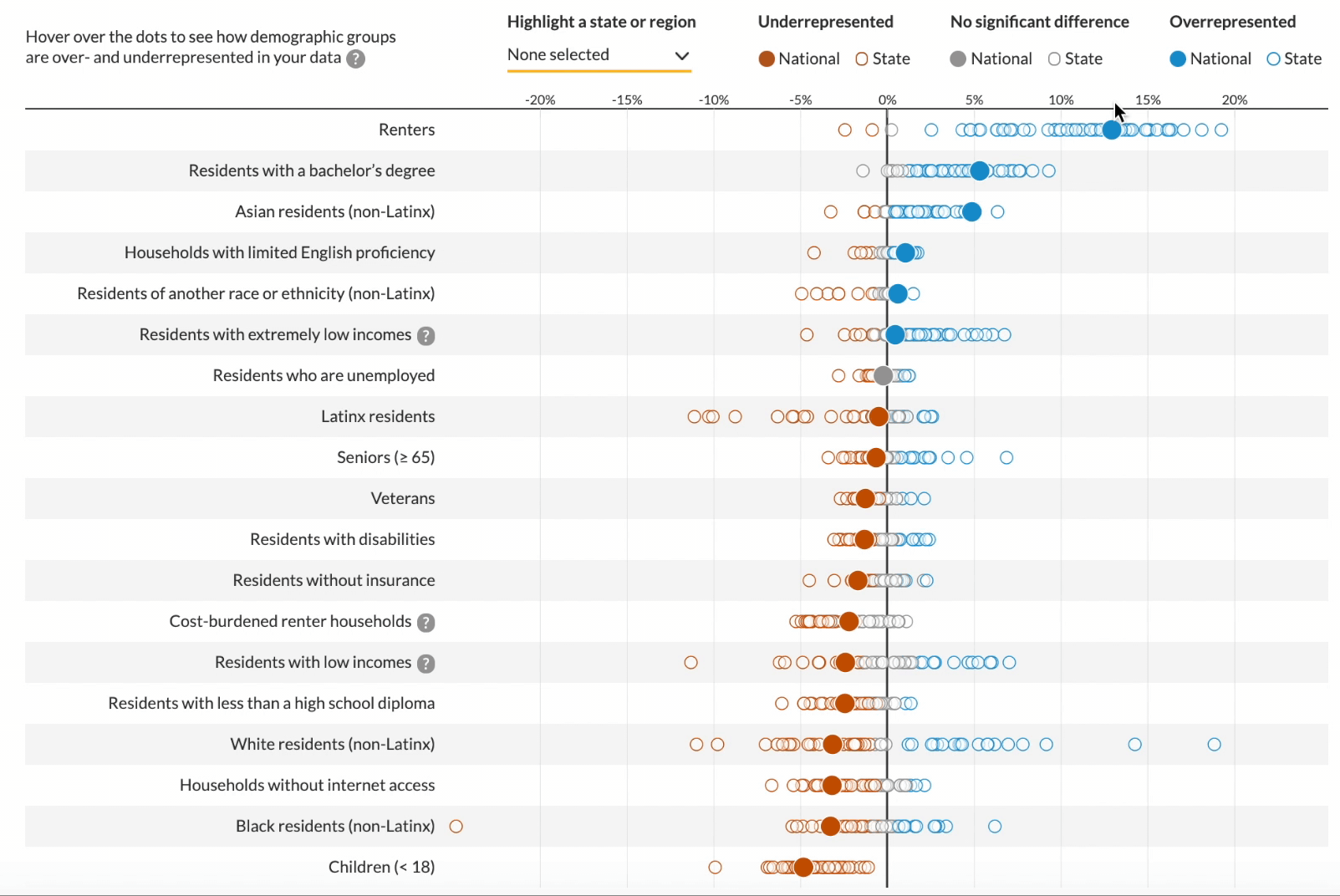
The version 2 tool introduces the ability to change the baseline dataset for the demographic disparity scores. We recommend users select the baseline closest to the target population (or “ideal” distribution) that the data are meant to represent. For example, if a user uploaded a dataset of grocery stores that accept Supplemental Nutrition Assistance Program benefits, which have an income limit for eligibility, they may want to change the baseline to the population with extremely low incomes. As we believe that EV charging stations are intended to target the entire population, we use the default baseline of total population for both the demographic and geographic disparity analysis.
From the analysis, we see renters are overrepresented by 12.9 percentage points in the US. In addition to renters, we see that residents with a bachelor’s degree and Asian residents are overrepresented, and children, Black residents, white residents, and households without internet access are underrepresented. These results may suggest that EV charging stations are concentrated in higher-income, urban neighborhoods. (Notably, although renters are overrepresented, cost-burdened renter households and residents with low-incomes are underrepresented.)
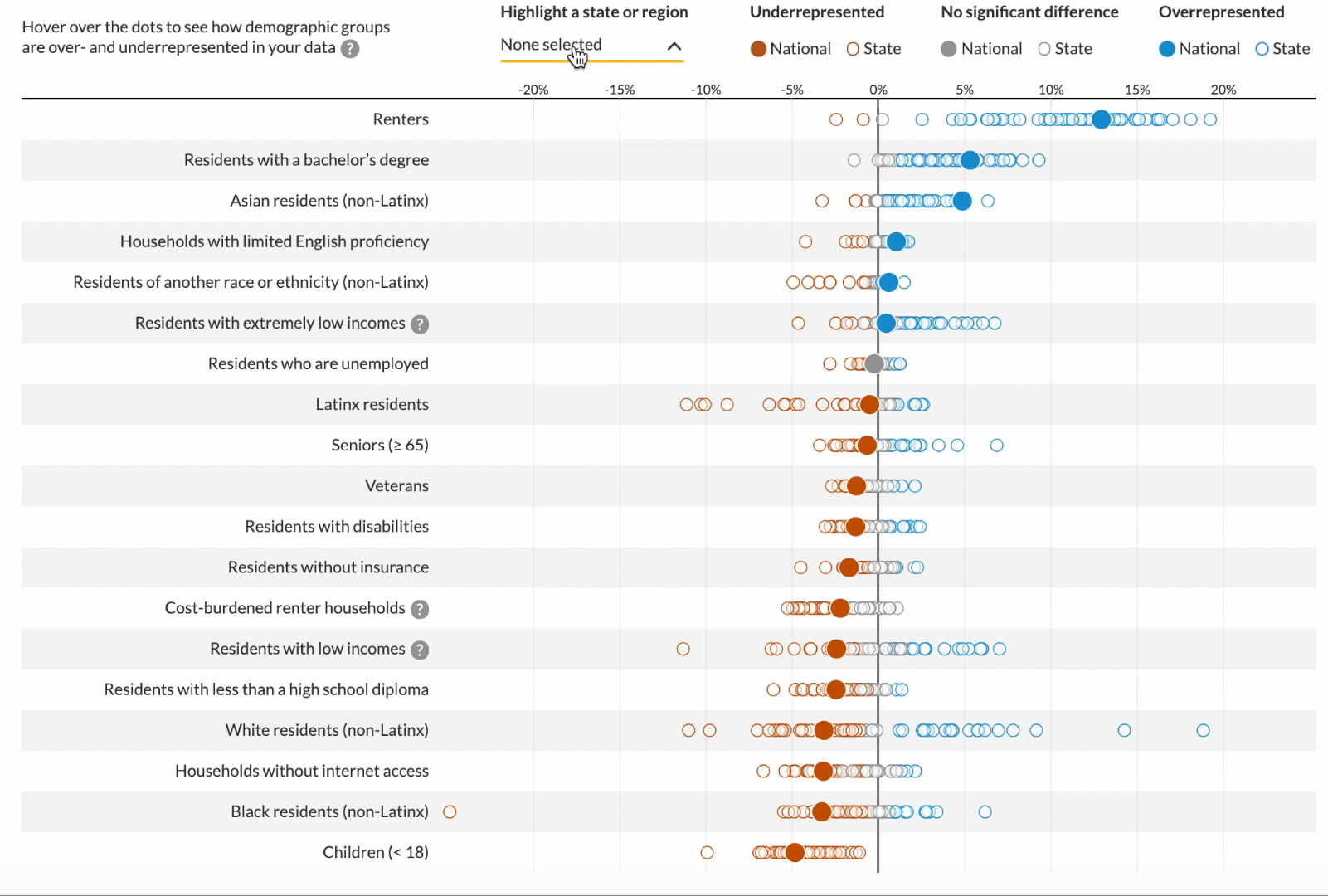
The state-level scores show the distribution of demographic disparity across the US and enable the identification of outliers. Although white residents are underrepresented in neighborhoods with EV charging stations across the US, in the District of Columbia, for example, white residents are overrepresented by 18.9 percentage points and Black residents are underrepresented by 24.8 percentage points. Federal officials could use this tool to benchmark progress toward closing access gaps in EV charging infrastructure as it expands across the US.
Geographic disparities
The second part of the dashboard shows the geographic disparity scores, or which states are over- and underrepresented in the data based on their share of the chosen baseline. From the map, we immediately see that California is significantly overrepresented. With a mouse-over, we can see how that score is calculated: the state has 12.1 percent of the total population in the US (our chosen baseline) but 30.6 percent of the EV charging stations. We take the difference between these two figures to calculate the geographic disparity score for California as 18.5 percent overrepresented. By contrast, Texas is 3.9 percent underrepresented. The federal officials managing the EV expansion program could use this chart to allocate new infrastructure spending to close access gaps.
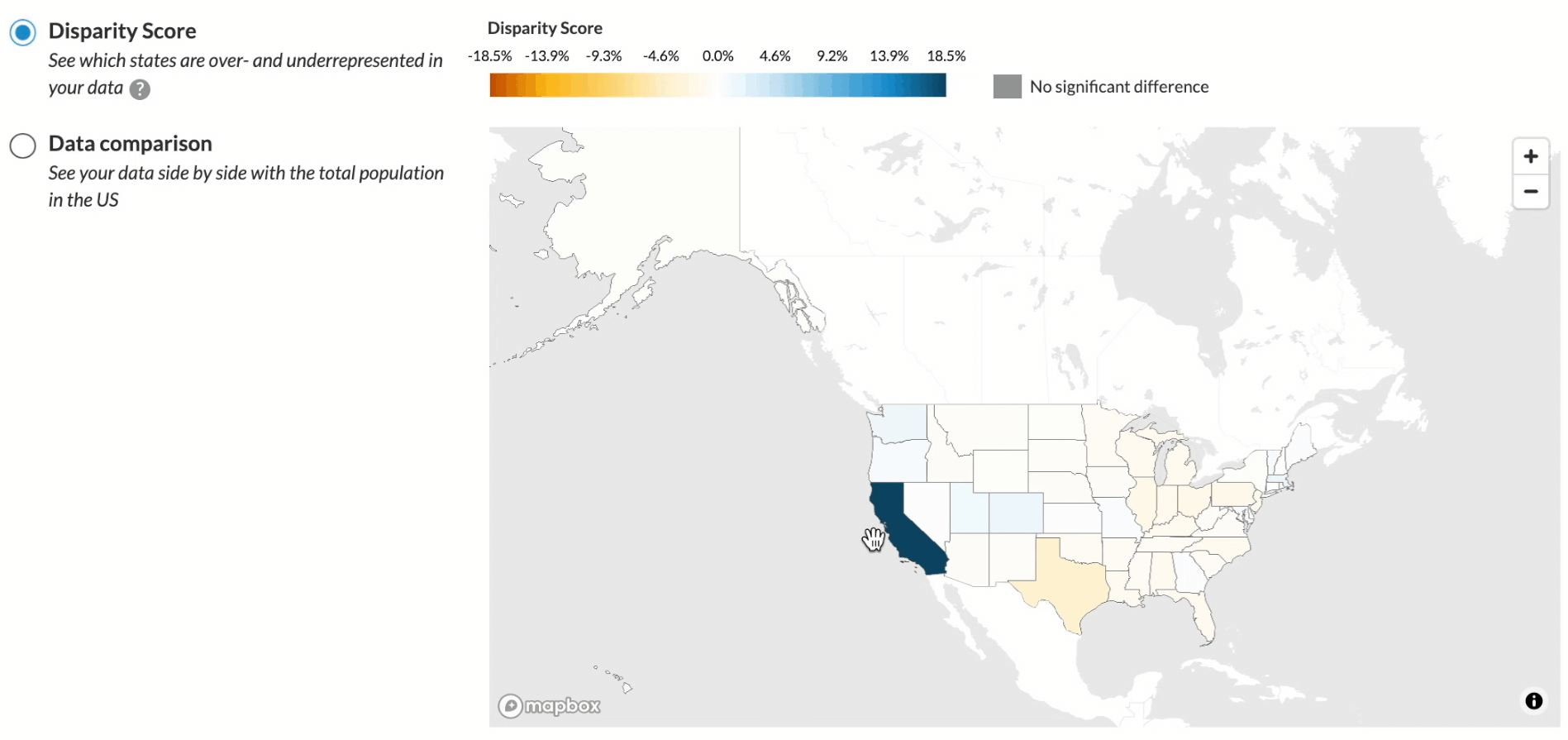
With the version 2 tool, a user can also seamlessly answer the question: Are certain areas in California driving the overrepresentation? By clicking “Home,” choosing the state-level analysis, and using the advanced options to filter the data using the State column, a user can take a deeper dive into access in California by county.
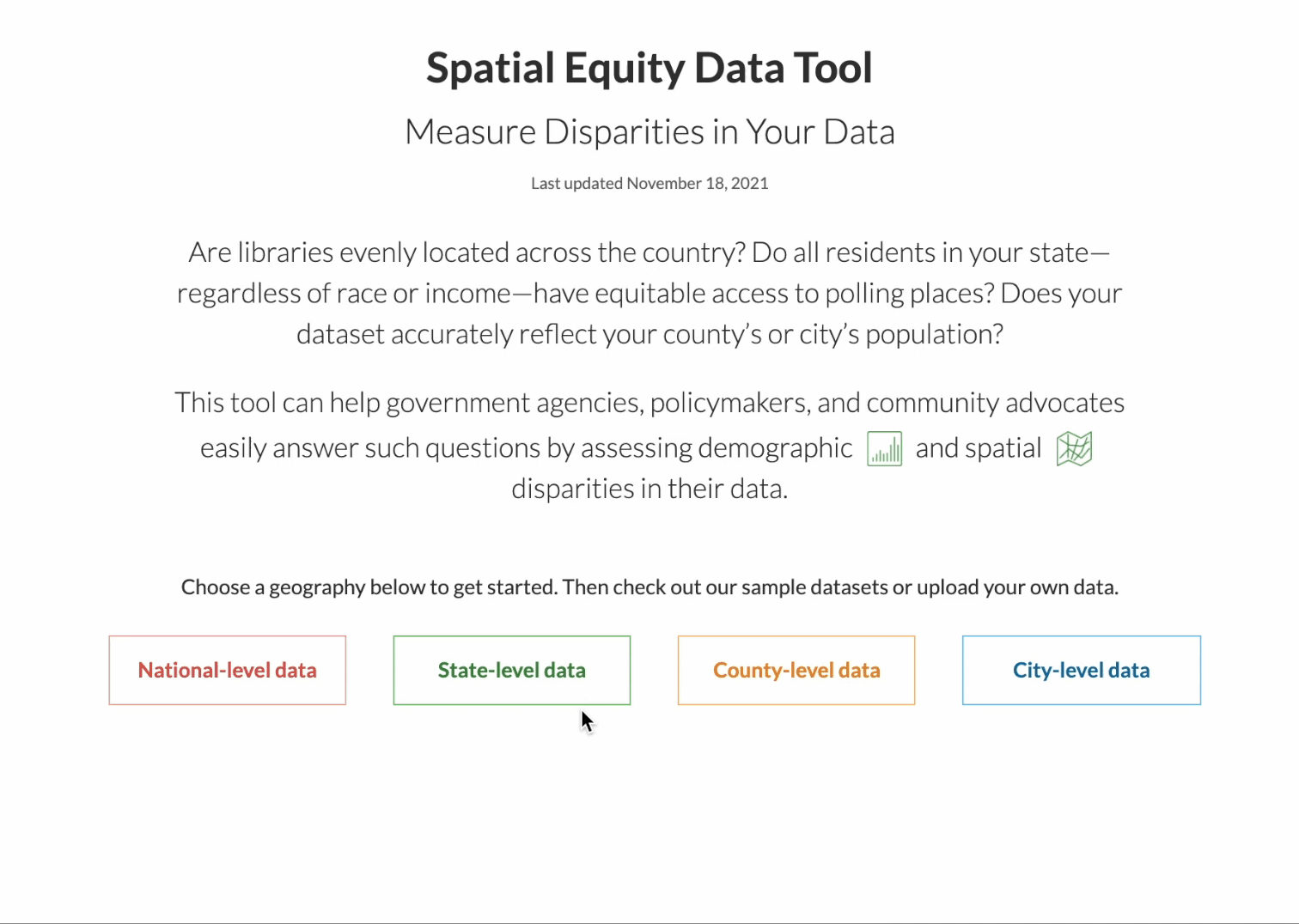
From the geographic disparity map, we see overrepresentation within California may be driven by San Mateo and Santa Clara Counties, but Southern California, including Los Angeles and San Bernardino Counties, are underrepresented. This deeper dive illustrates the importance of using the tool at different levels of analysis. California’s overall overrepresentation in the allocation of EV charging stations conceals pockets of the state that continue to be underserved by this infrastructure. Federal and state officials could use this analysis to allocate additional EV charging resources to the underserved parts of the state.
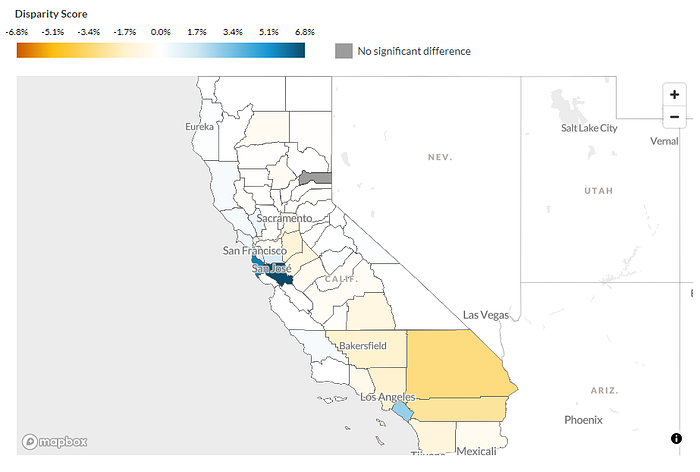
We’re grateful to everyone who used the original tool and provided the feedback that motivated this new release, as well as the small group of beta testers who provided valuable input on early prototypes of version 2. We are excited that version 2 responds to the most-requested enhancements, but we still have many ideas for additional features, including new baselines, spatial filters, and more flexible geographies. We hope to continue developing this tool by incorporating these features and others based on user feedback.
We have published all the code powering the tool on Github in case you want to build out these features yourself or modify our methodology. If you would like to request any additional features or have specific questions about the tool, please reach out to anarayanan@urban.org or open an issue on Github. If you have any questions while using the tool, please check out our technical appendix and FAQ.




